Credit to:Shirakamifubuk
i got the idea from this roblox animation of the crash and breakup : https://youtu.be/nVK4SNtOlM4
The aircraft (registration G-APFE) arrived at Tokyo Haneda Airport at 12:40 on the day of the accident from Fukuoka Airport, where it had diverted the previous day due to conditions on the ground in Tokyo. The weather there had since improved behind a cold front with a steep pressure gradient bringing cool dry air from the Asian mainland on a strong west-northwest flow, with crystal-clear sky conditions. For the next Tokyo–Hong Kong segment, the crew received a weather briefing from a company representative, and filed an instrument flight rules (IFR) flight plan calling for a southbound departure from Haneda via the island of Izu Oshima, then on airway JG6 to Hong Kong at flight level 310 (31,000 ft [9,400 m]). 89 passengers were from the United States, one crew member and 12 passengers were from Japan, nine crew members were from the United Kingdom, the remaining crew member and a passenger were from China, one each came from Canada and New Zealand while there are no known nationalities for the nine remaining passengers. The flight was under the command of Captain Bernard Dobson (45), first officer Edward Maloney (33), second officer Terence Anderson (33) and flight engineer Ian Carter (31). Captain Dobson was described as a very experienced 707 pilot who had been flying the type since 1960. At 13:42 the crew contacted air traffic control requesting permission to start the engines, and amending their clearance request to a visual meteorological conditions (VMC) climb westbound via the Fuji-Rebel-Kushimoto waypoints, which would take them nearer to Mount Fuji, possibly to give the passengers a better view of the landmark. The aircraft began taxiing at 13:50 and took off into the northwest wind at 13:58. After takeoff, the aircraft made a continuous climbing right turn over Tokyo Bay, and rolled out on a southwest heading, passing north of Odawara. It then turned right again toward the mountain, flying over Gotemba on a heading of approximately 298°, at an indicated airspeed of 320 to 370 kn (590 to 690 km/h; 370 to 430 mph), and an altitude of approximately 16,000 ft (4,900 m), well above the 12,388 ft (3,776 m) mountain peak.The aircraft then encountered strong turbulence, causing it to break up in flight and crash into a forest.The aircraft left a debris field 16 km (10 mi) long. Analysis of the location of wreckage allowed the accident investigators to determine that the vertical stabiliser attachment to the fuselage failed first. It left paint marks indicating that it broke off the port side horizontal stabiliser as it departed to the left and down. A short time later, the ventral fin and all four engine pylons failed due to a leftward over-stress, shortly followed by the remainder of the empennage. The aircraft then entered a flat spin, with the forward fuselage section and the outer starboard wing breaking off shortly before impact with the ground.
An 8 mm film exposed by one of the passengers was recovered from the wreckage. It showed pictures of the Tanzawa Mountains and Lake Yamanaka, followed by two empty frames and then apparently images of the aircraft's interior, before ending abruptly. Tests suggested that the two empty frames may have been the result of structural loads of up to 7.5 g momentarily jamming the camera's feeding mechanism.
Although some stress cracking was found in the vertical stabiliser bolt holes, it was determined by subsequent testing that it did not contribute to the structural failure. Still, it was potentially a significant flight safety issue. Subsequent inspections on Boeing 707 and similar Boeing 720 aircraft as a result of this discovery did reveal this was a common problem, and corrective maintenance actions on the fleet eventually followed.
One day after the crash, speculation was that fierce winds above Mount Fuji were responsible. The New York Times wrote that, despite initial reports of fire and explosion, aviation experts were of the opinion that wind conditions around the volcanic cone may have caused the crash, the vicinity of the peak being notorious for its difficult air currents. The violent forces exerted by the turbulent air could have caused structural failure of one of the engines, leading to a subsequent fire.
The investigation report concluded that the aircraft crashed as a result of its encounter with "abnormally severe turbulence over Gotemba City which imposed a gust load considerably in excess of the design limit." It also stated "it is not unreasonable to assume that, on the day of the accident, powerful mountain waves existed in the lee of Mt Fuji, as in the case of mountain waves formed by extended ridges, and that the breakdown of the waves resulted in small-scale turbulence, the intensity of which might have become severe or extreme in a short period of time.
|rest in peace to all that lost their lives in this horrible crash|
Activation groups [ in the order that the events happened ]
AG-1 = Detach right Horizontal stabilizer
AG-2 = Reverse thrust [dont use it cuz its useless]
AG-3 = Detach engine 1, 2, 3
AG-4 = Detach Vertical stbilizer , Forth engine and the right horizontal stabilizer
AG-5 = Detach tail
AG-6 = Detach the end of the right wing
AG-7 = Detach the nose of the aircraft
[guide on how to time those AG's ]
First press AG-1 and AG-3 at almost the same time [also reduce the engines power to 0 when pressing 3]
then AG-4 and AG-5 at the same time [A slight delay between the two AG's]
after all of that wait around 1 sec or wait to hit around 3000 feet and activate AG-6 , after that press AG-7 and wait for it to crash (dont forget to Activate air-to-Ground and press alt [for keyboard] when it crashes or its a few feet from touching the ground
mods i recommend to use : https://www.simpleplanes.com/Mods/Download/1425199?p=Desktop
[Fuji]
https://www.simpleplanes.com/Mods/Download/1482942?p=Desktop
[Kaboom]
Specifications
Spotlights
- VietnamAirlinesFlight474 10 months ago
- LuisMe 10 months ago
- AirCanadaA330 3 months ago
General Characteristics
- Predecessor Fixed Donald's BOAC 911
- Successors 2 airplane(s) +28 bonus
- Created On Windows
- Wingspan 192.4ft (58.6m)
- Length 210.4ft (64.1m)
- Height 56.7ft (17.3m)
- Empty Weight N/A
- Loaded Weight 315,292lbs (143,014kg)
Performance
- Power/Weight Ratio 1.368
- Wing Loading 95.1lbs/ft2 (464.3kg/m2)
- Wing Area 3,315.3ft2 (308.0m2)
- Drag Points 49943
Parts
- Number of Parts 390
- Control Surfaces 7
- Performance Cost 1,608


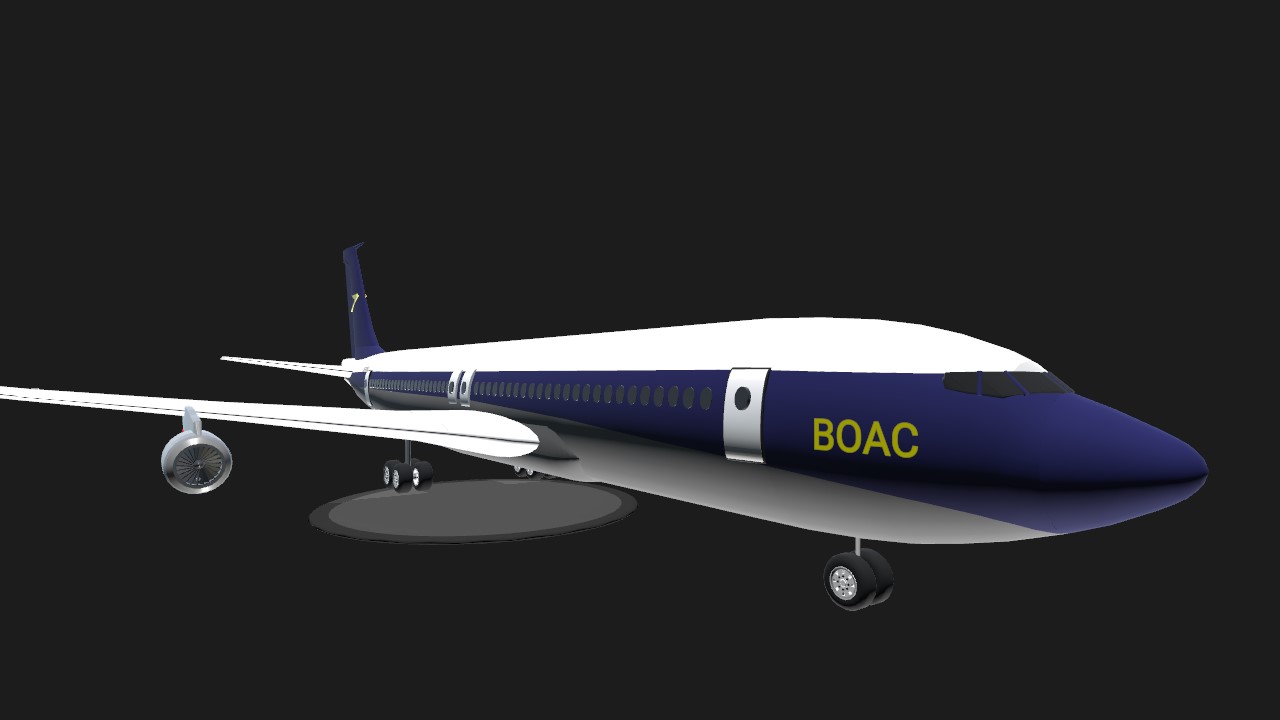
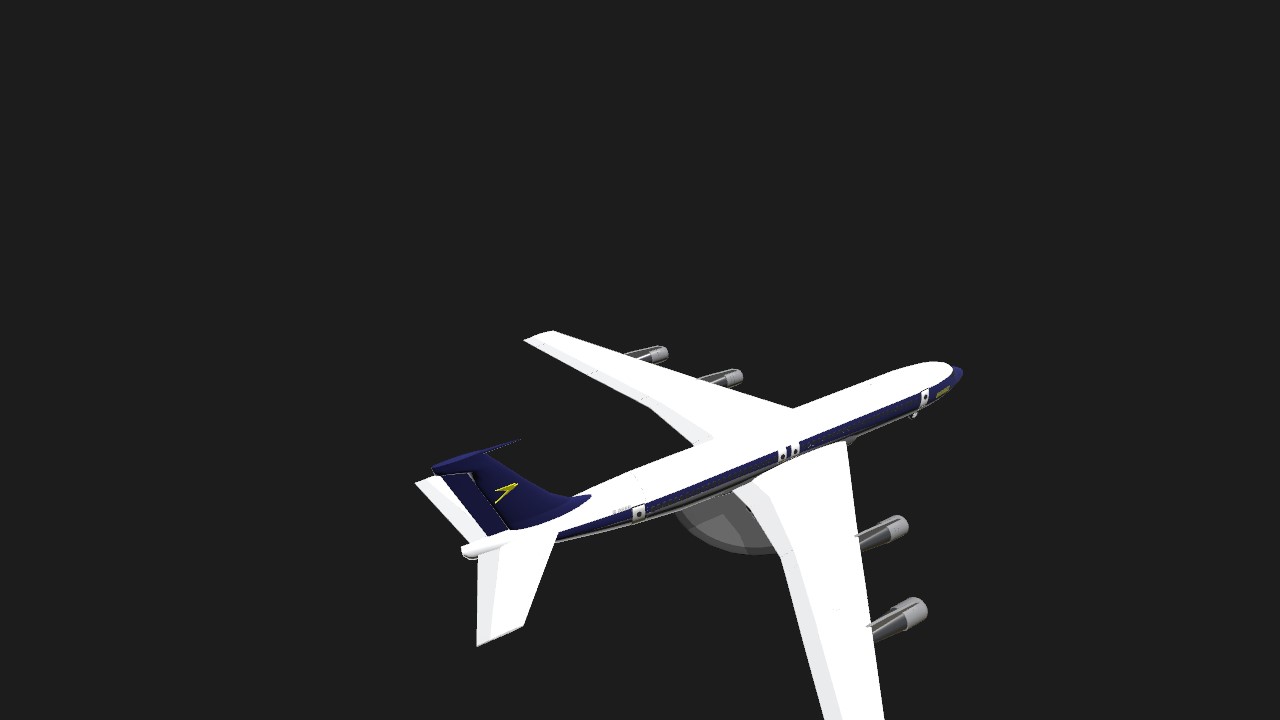
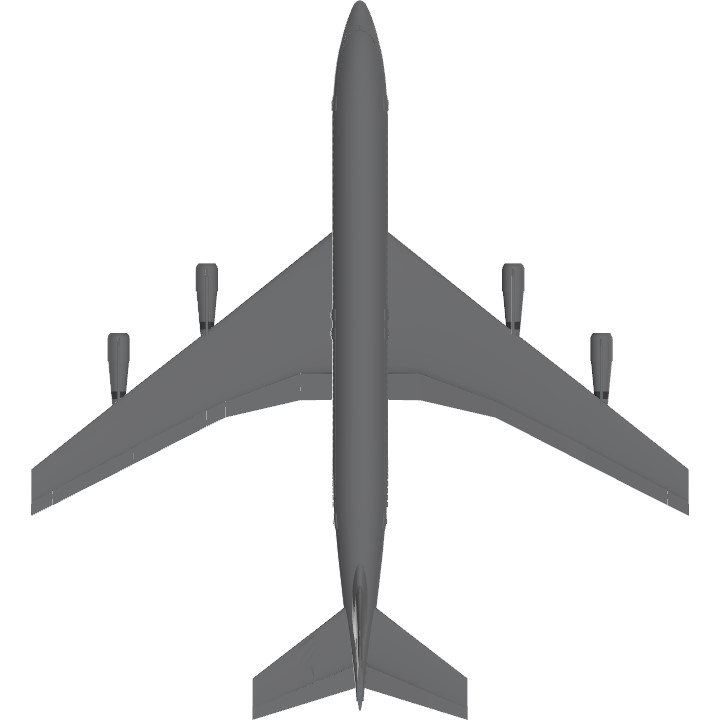
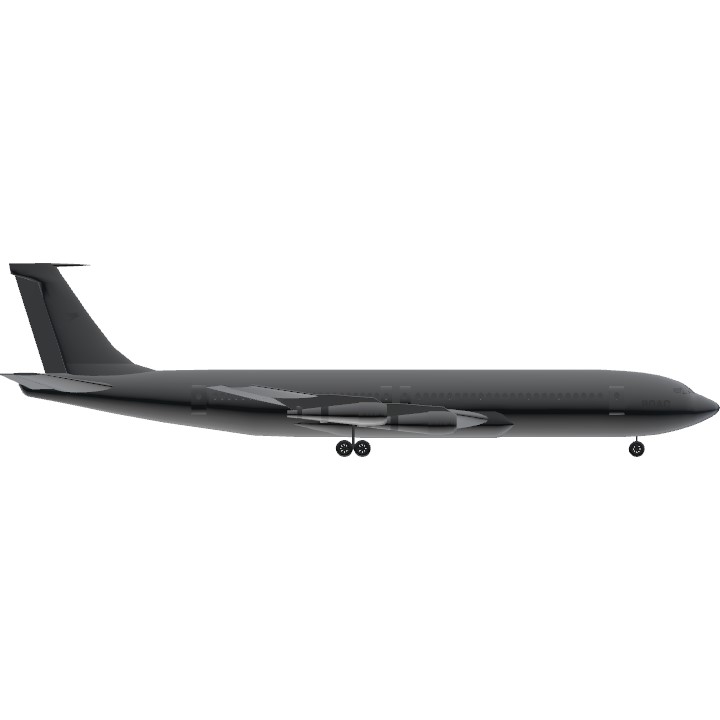
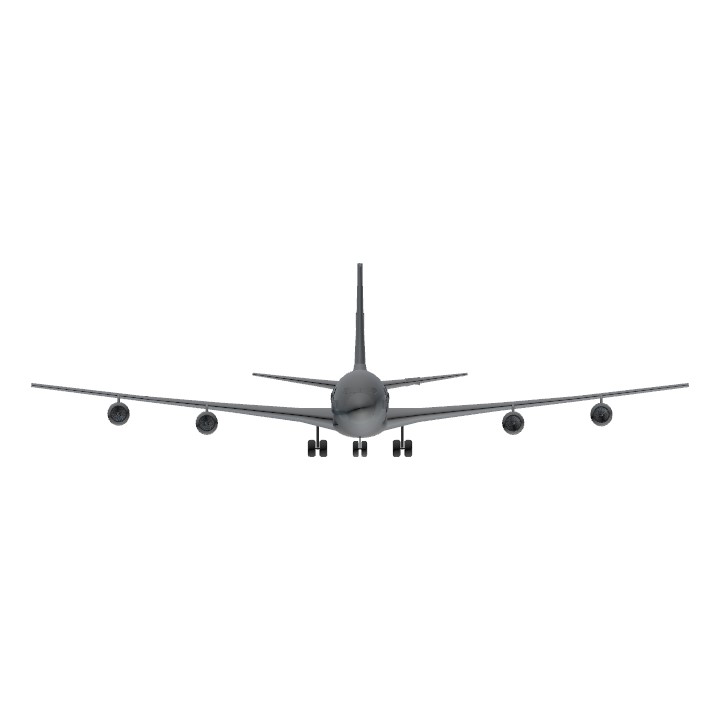
boeing 707 super 123/133/023/323/333